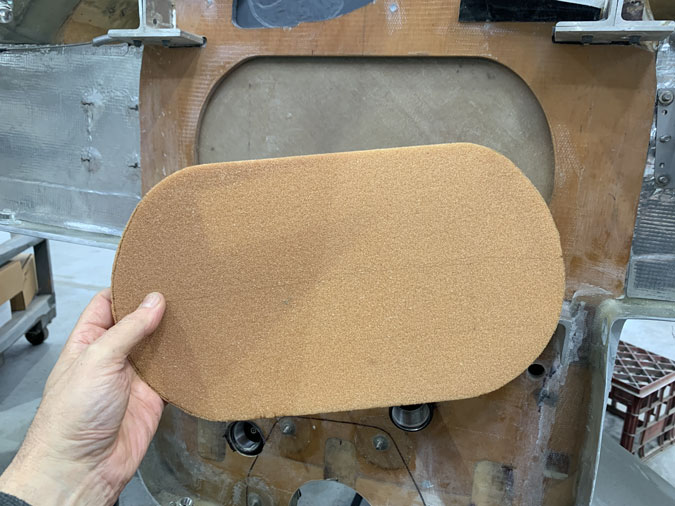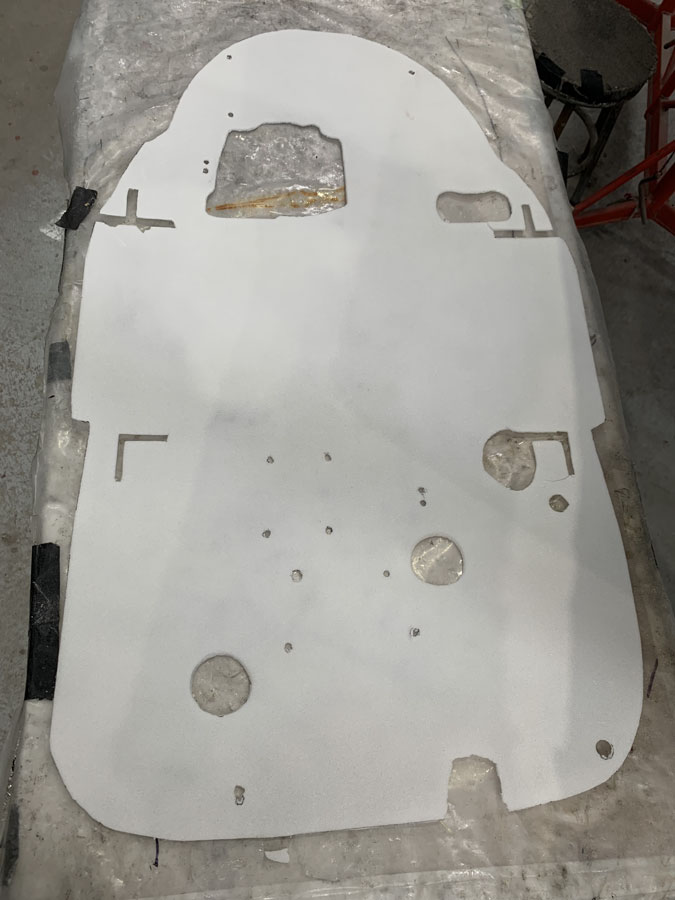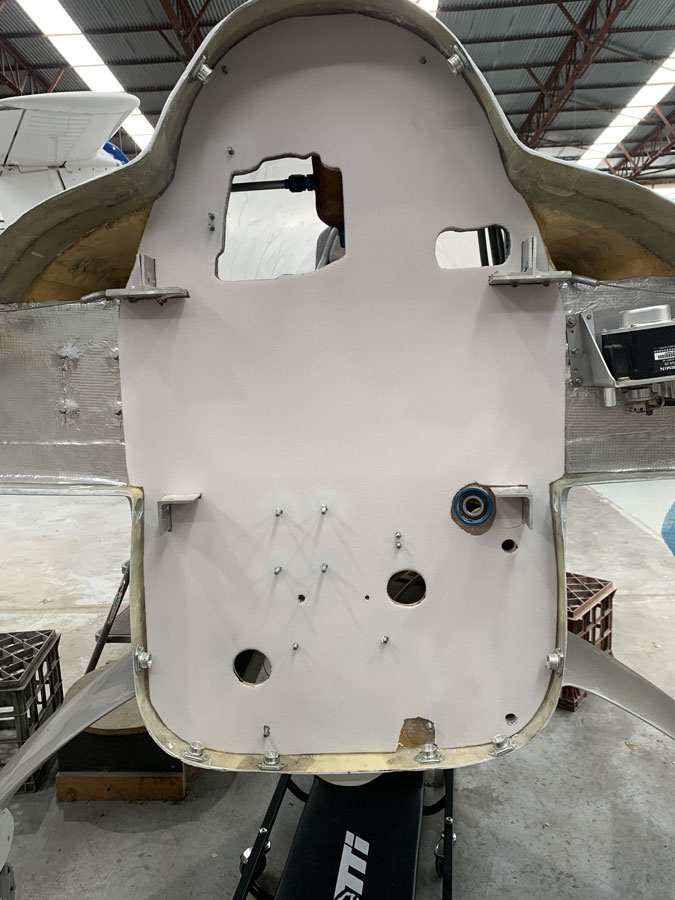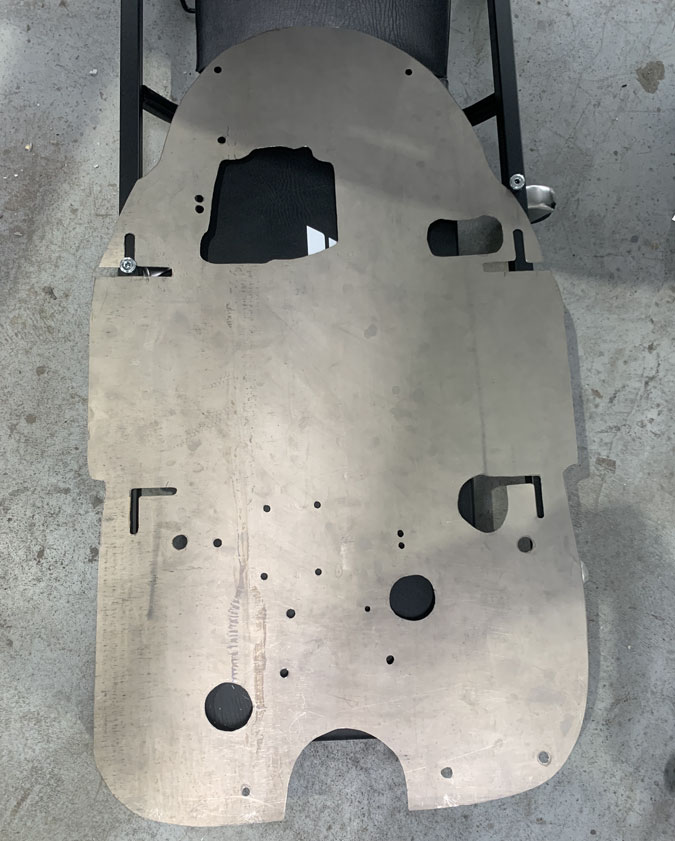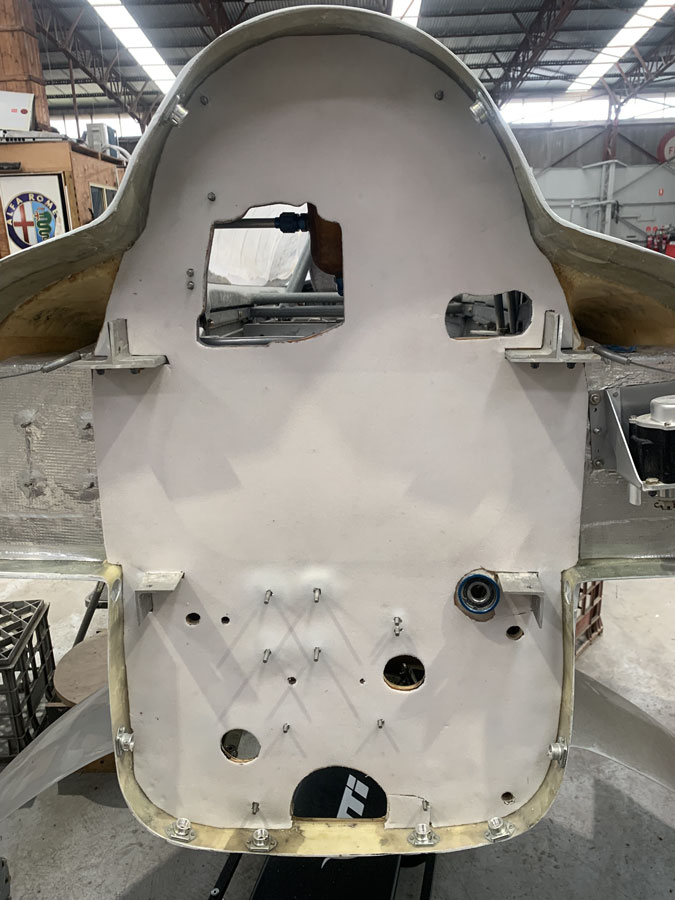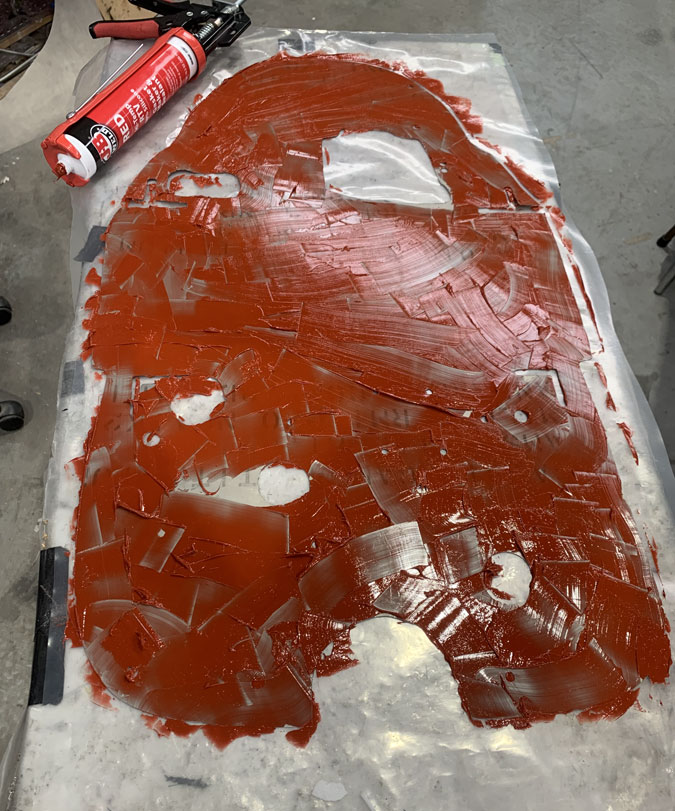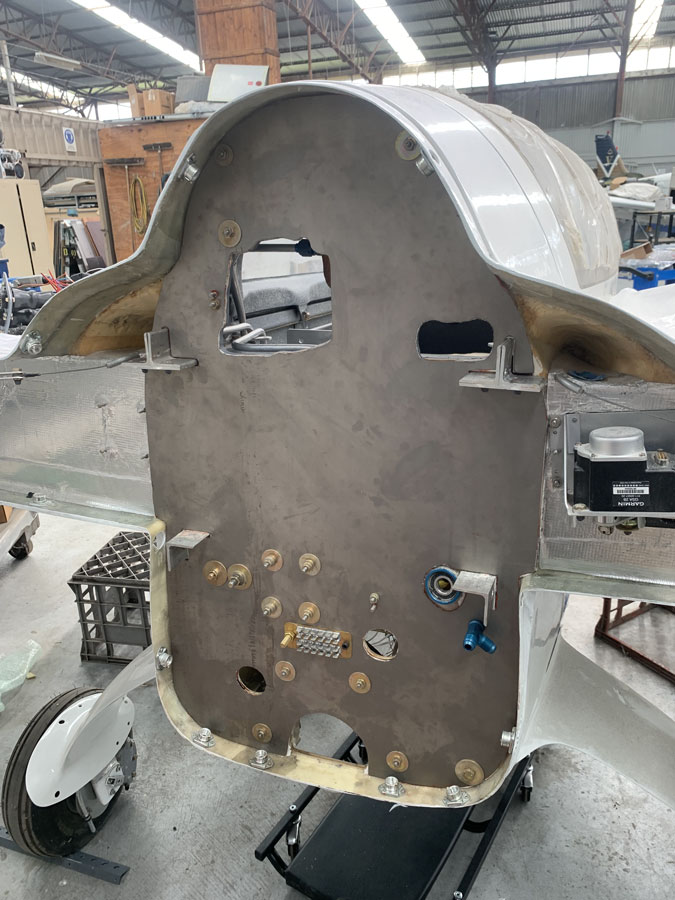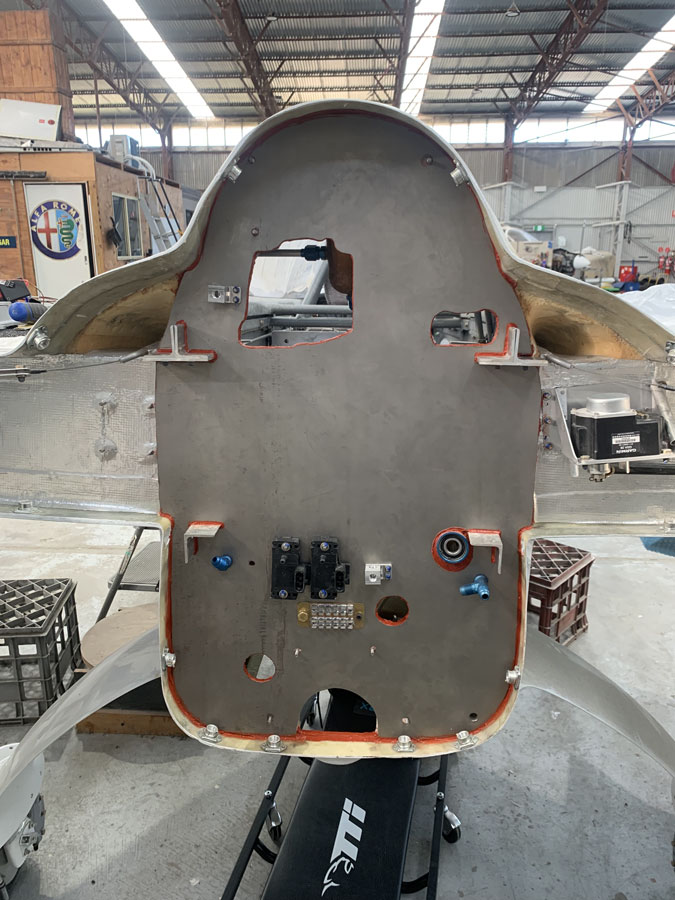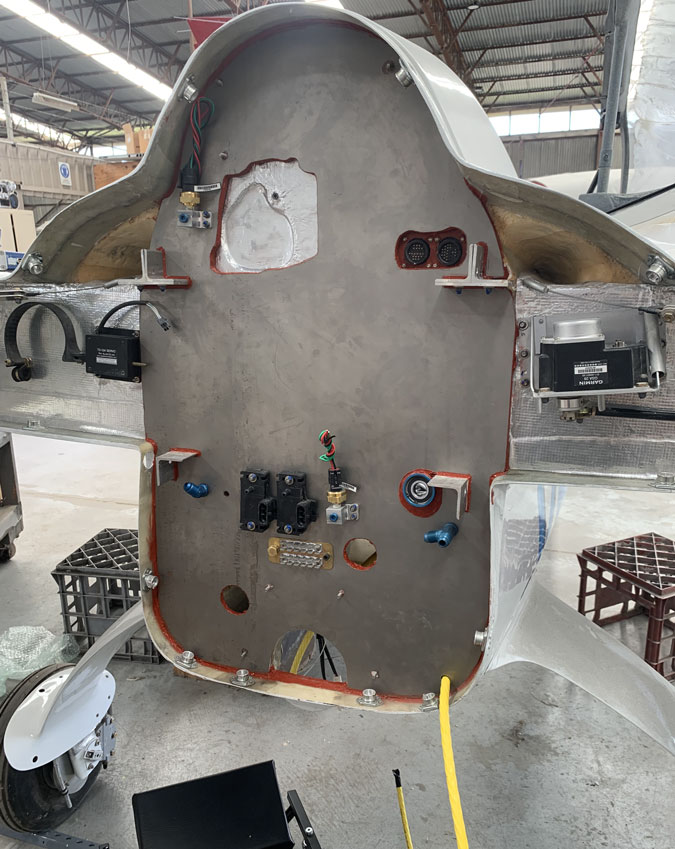| Date: 12-03-2023 | |
| Number of Hours: 25 | |
| Manual Reference: 15 |
The firewall ‘install’ continues. The plans have a piece of the plywood firewall bulkhead cut out to save weight. This now presents a problem if I want to have a flat surface to work with. Some builders transition the area to give a ramp and then match to fit.
My take on this is just to add some foam to that cavity.
This is a pretty simple solution.
The next step was to make a cardboard template from multiple pieces taped together. It took a while but the more care I made here the easier the rest was going to be.
This is fiberfrax. It is only about .065″ thick, about the same as an ice cream stick. I checked the plans twice and looked up the relevant technical data sheet. This flimsy stuff WILL hold back hot fires. You can cut it with a fingernail, so obviously it needs a shield of metal to protect it.
To position the holes, in the end I could just press through this stuff is so thin and weak.It is also quite brittle. I’ll have to patch a couple of areas
I next user the fiberfrax as a fresh template to mark out my special sheet of titanium. This stuff is really hard and springy. Did I say hard?
This really took some work. I mainly used aviation shears but trimmed with some carbide bits I have for the dremel. Even the holes needed a sharp drill bit. I did NOT cut myself during this process probably because I was very careful, Titanium is really sharp.
This is still the trial fit stage. It took a bit of fiddling to get this to work.
This is the fiberfrax glued in place. I went with spray contact adhesive. There was no point in using RTV silicone forward of this heat shield. It either works or it doesn’t. The material is so thin and weak that almost any glue would be OK.
The titanium on the other hand got a full spread of RTV silicone to adhere it to the firberfrax. Not for strength as much as some initial protection on the hot and dirty side where the engine is.
Then the whole mess was clamped together as best I could and left along for the night to cure.
I used most of the ‘opportunities’ to clamp things down using fasteners through the holes.
After I mounted the items on hand I lined the edges with the Hi-temp RTV to finish things. I’m very pleased with the result and the fact that I didn’t cut myself on the edges of the Ti. I still have the two hatches to finish off.
Now the hatches are back in and secured. I coated the larger one with RTV and then put some heat shield on top for good measure. The smaller one has a layer of RTV impregnated fiberglass. This give a bit of a gasket fit. I want to ensure that I don’t get any fumes into the cabin.
The main job is done here. I have a fire resistant firewall now. After a few more tasks I can put the engine back for the ‘final’ time later this week.

